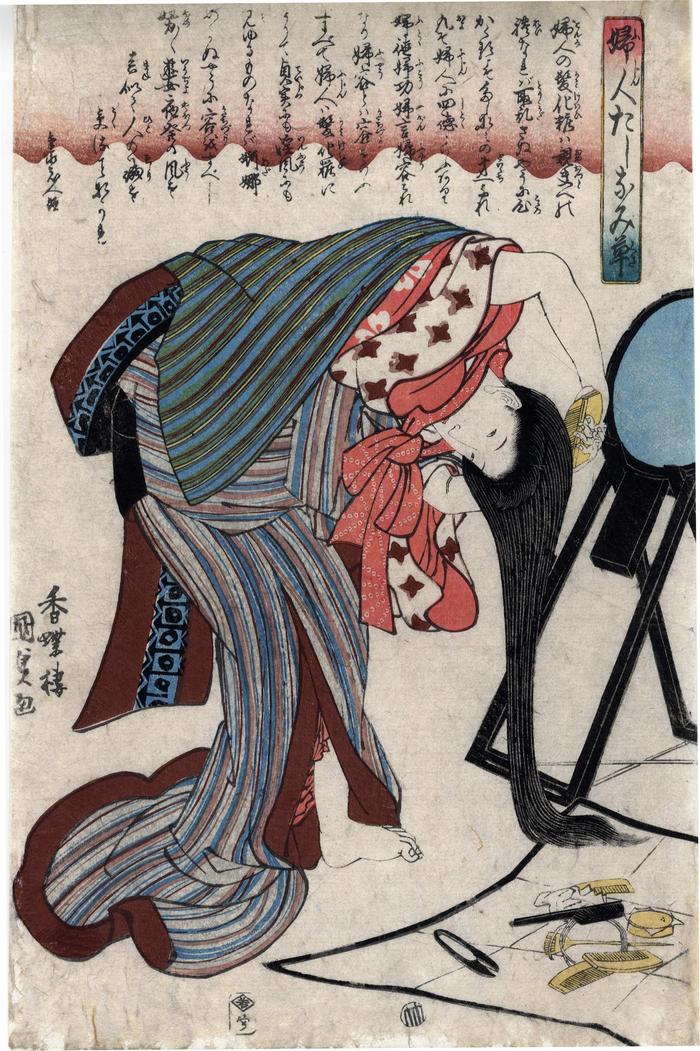Utagawa Kunisada (歌川国貞) / Toyokuni III (三代豊国) (artist 1786 – 01/12/1865)
Arranging her hair (kamiyui - 髪結い) from the series Fitting Acomplishments for Women (Fujin tashinami-gusa - 婦人たしなみ草)
1842 – 1843
9.5 in x 14.5 in (Overall dimensions) Japanese color woodblock print
Signed: Kōchōrō Kunisada ga
香蝶楼国貞画
Publisher: Wakau (Marks U366 - 21-119)
Censor's seal: Take (Takeguchi Shōemon)
Museum of Fine Arts, Boston
Ritsumeikan University - in black and white only
Ashmolean Museum - notice the difference at top of the print; probably a later edition
Bryn Mawr At the woman's feet is a large piece of paper laid out on which lie the various items needed to make up her hair. These include a scissors, various combs, a lidded contain which may hold a powder or some other contents meant to treat the hair and even a brush for its application. There is also a coil of motoyui (元結) (aka mizuhiki - 水引) cords, most often made of remarkably strong, twisted paper, for tying off the hair into a highly stylized and attractive coiffure.
In the other edition(s) noted by the links to other collections - the Museum of Fine Arts in Boston, the Ashmolean and the collection at Bryn Mawr - the large piece of paper is an opaque greenish color. (JSV)
****
There are at least two editions of this print. It is easy to see why it was so marketable at the time it was designed. If you compare this example in the Lyon Collection to the other examples at the Museum of Fine Arts in Boston, the Ashmolean at Oxford and Ritsumeikan University you will see that this print is different than those three. Most obvious is the treatment at the top of the print near the inscription. The example here has a multi-colored cartouche while the other three have a solid red one. Schaap also notes this aspect of the printings. Then compare the robes and loose obi, which differ considerably. Even the paper laid out on the ground in the lower right is different. In the other three examples cited it is a solid green color - even though the example at the Ritsumeikan is shown only in black and white - while the one in the Lyon Collection remains uncolored. Comparisons of this sort are very helpful in the connoisseurship of Japanese woodblock prints. (JSV)
****
Part of one of the editions of this print was used for the cover of a book published in Russian on a Japanese poet, Yosano Akiko (與謝野晶子: 1878-1942). The loose translation of the title of this book is Mat of Hair.
****
The curatorial files, loosely translated from German into English, for one of the related Kunisada prints notes: "[A] ...piece of paper is spread out on the floor, on which various accessories lie: combs, scissors, .... The hair that fell out during careful combing was collected and kept. These were later sold to a wig maker who always had a need for them... [and B] Kabuki theater wigs were made from real hair."
beautiful woman picture (bijin-ga - 美人画) (genre)
Wakau (publisher)
